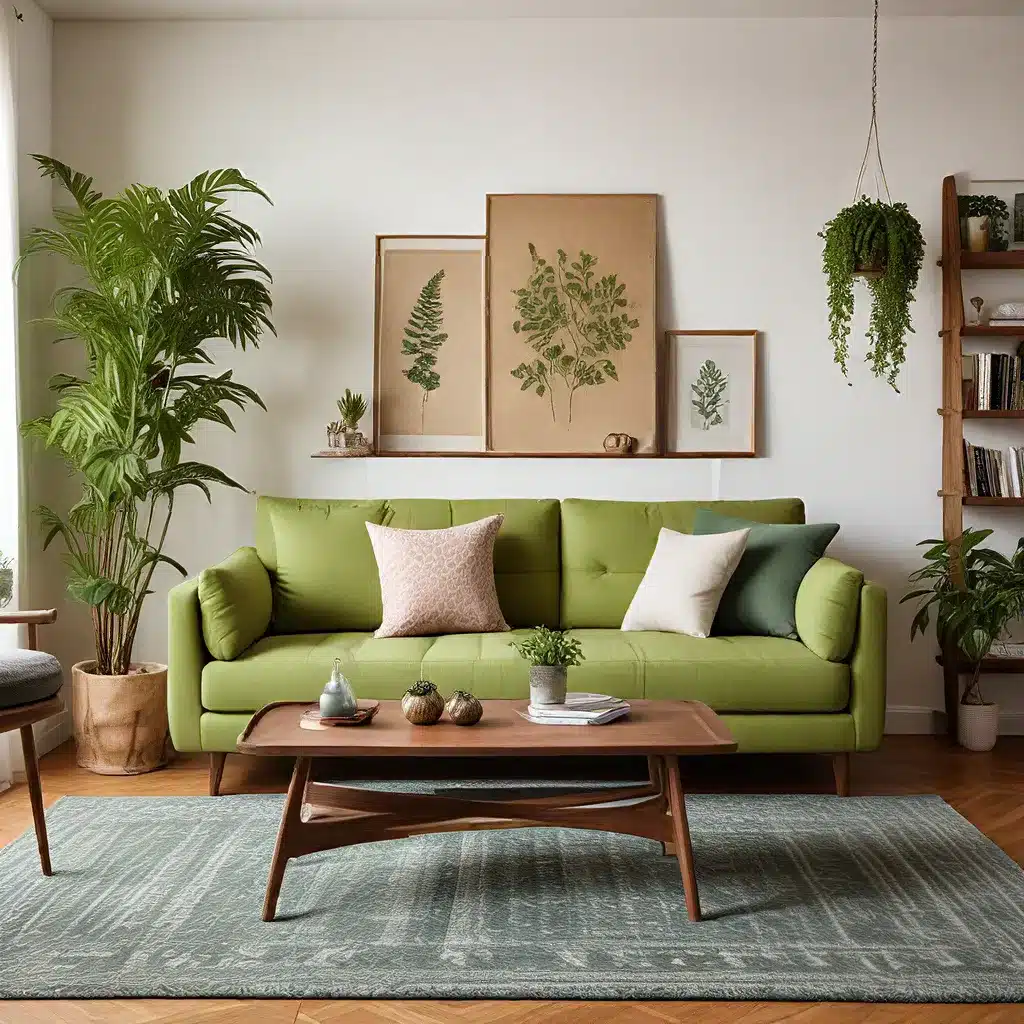
As the world becomes increasingly conscious of the impact our choices have on the environment, the demand for sustainable and eco-friendly home decor has risen dramatically. Today’s design-savvy homeowners are seeking ways to create beautiful, comfortable, and sustainable living spaces that reflect their values and commitment to a greener lifestyle.
Embracing the Power of Green Design
In the realm of interior design, green design has emerged as a transformative movement, empowering homeowners to curate living spaces that are not only visually stunning but also environmentally responsible. From the selection of natural and renewable materials to the incorporation of energy-efficient solutions, the principles of green design are reshaping the way we approach home decor.
One of the foundational elements of sustainable design is the use of eco-friendly materials. This includes everything from bamboo and reclaimed wood to natural fabrics like linen and organic cotton. These materials not only contribute to a reduced carbon footprint but also often possess a timeless, artisanal quality that adds depth and character to a room.
Effortless Luxury Meets Environmental Consciousness
Contrary to popular belief, sustainable design and luxury living are not mutually exclusive. In fact, the intersection of these two realms has given rise to a new era of effortless elegance and environmental consciousness. Homeowners are now able to indulge in the opulence of high-end furnishings and materials while maintaining a commitment to eco-friendly practices.
Urban Grace Interiors, a renowned design firm, has made it their mission to bridge the gap between luxury and sustainability. Their portfolio showcases stunning projects that seamlessly integrate natural elements, energy-efficient technologies, and innovative design solutions to create breathtaking living spaces.
Sustainable Space Planning: Maximizing Efficiency and Comfort
Sustainable design extends far beyond the selection of materials; it also encompasses the strategic planning and optimization of living spaces. Space planning plays a crucial role in maximizing efficiency, reducing energy consumption, and enhancing the overall user experience.
Through thoughtful layout and furniture placement, designers can create multi-functional spaces that cater to the diverse needs of homeowners. This not only reduces the overall footprint of a home but also promotes a more mindful and intentional approach to daily living.
Bringing the Outdoors In: Biophilic Design Principles
One of the most captivating trends in sustainable design is the incorporation of biophilic design principles. Biophilia, the innate human affinity for the natural world, has inspired designers to blur the lines between indoor and outdoor spaces, creating a seamless integration of nature and the built environment.
By strategically incorporating natural elements, such as live plants, natural light, and natural materials, designers can foster a calming and rejuvenating atmosphere that promotes physical and mental well-being. This biophilic approach not only enhances the aesthetic appeal of a space but also contributes to improved indoor air quality and reduced stress levels.
Embracing the Future: Sustainable Smart Home Technology
As technology continues to evolve, the intersection of sustainability and smart home automation has become a powerful force in the world of eco-friendly home design. Smart home technologies, such as energy-efficient appliances, intelligent lighting systems, and advanced climate control, are revolutionizing the way we interact with our living spaces.
These innovative technologies not only reduce energy consumption and utility bills but also empower homeowners to take a more active role in their own sustainability efforts. By integrating these smart home features, homeowners can create energy-efficient and resource-conscious living environments that contribute to a greener future.
Personalized Luxury: The Role of Interior Designers
Achieving the perfect balance of luxury and sustainability in home design often requires the expertise of professional interior designers. These design professionals possess a deep understanding of the latest trends, materials, and technologies that can seamlessly integrate into a homeowner’s vision.
Interior designers work closely with clients to understand their unique needs, preferences, and lifestyle requirements, ensuring that the final design not only reflects their personal style but also aligns with their environmental values. By leveraging their industry knowledge and creative problem-solving skills, designers can transform ordinary spaces into extraordinary and sustainable havens.
Conclusion: Embracing Sustainable Splendor
As the demand for eco-friendly and sustainable living continues to grow, the world of home decor has experienced a profound transformation. Sustainable design has evolved from a niche concept to a mainstream movement, empowering homeowners to create living spaces that are visually stunning, environmentally responsible, and tailored to their personal needs.
By embracing the principles of green design, biophilic design, and smart home technology, homeowners can embark on a journey towards a greener lifestyle that does not compromise on luxury or comfort. With the guidance of professional interior designers, this sustainable splendor can be achieved, ultimately contributing to a more sustainable and mindful future.

